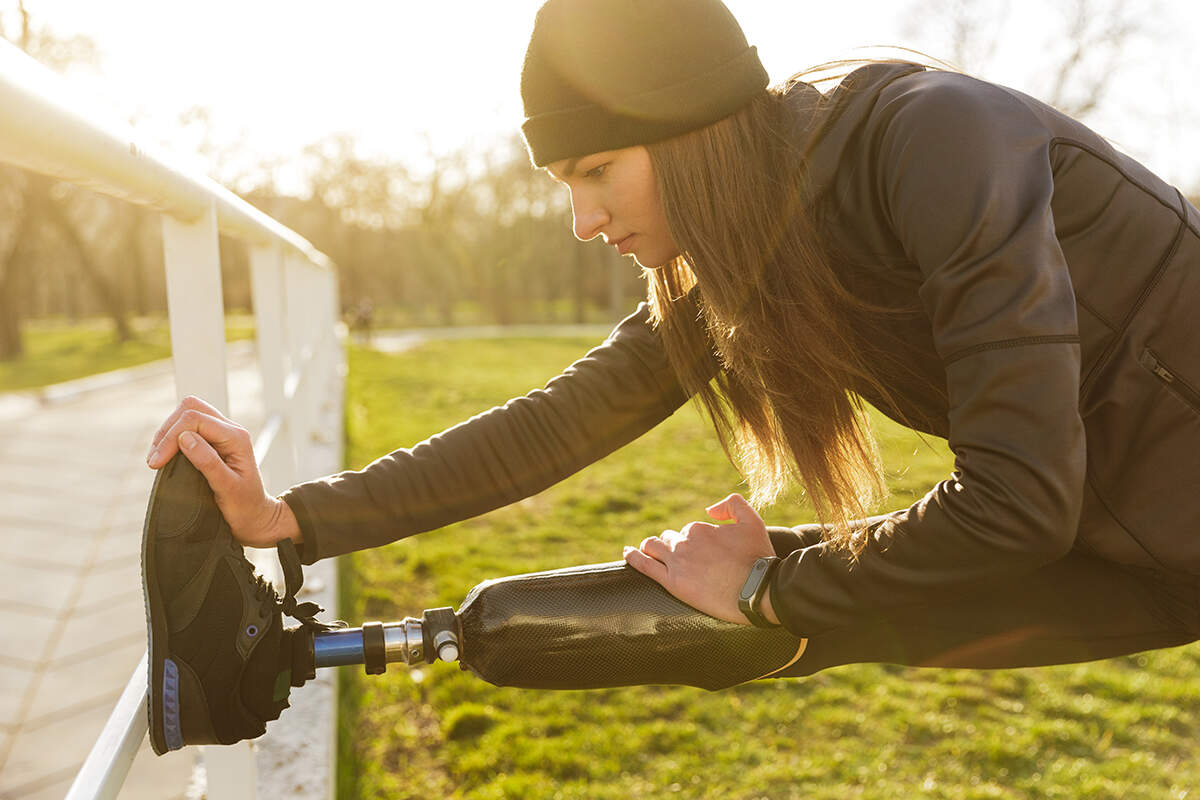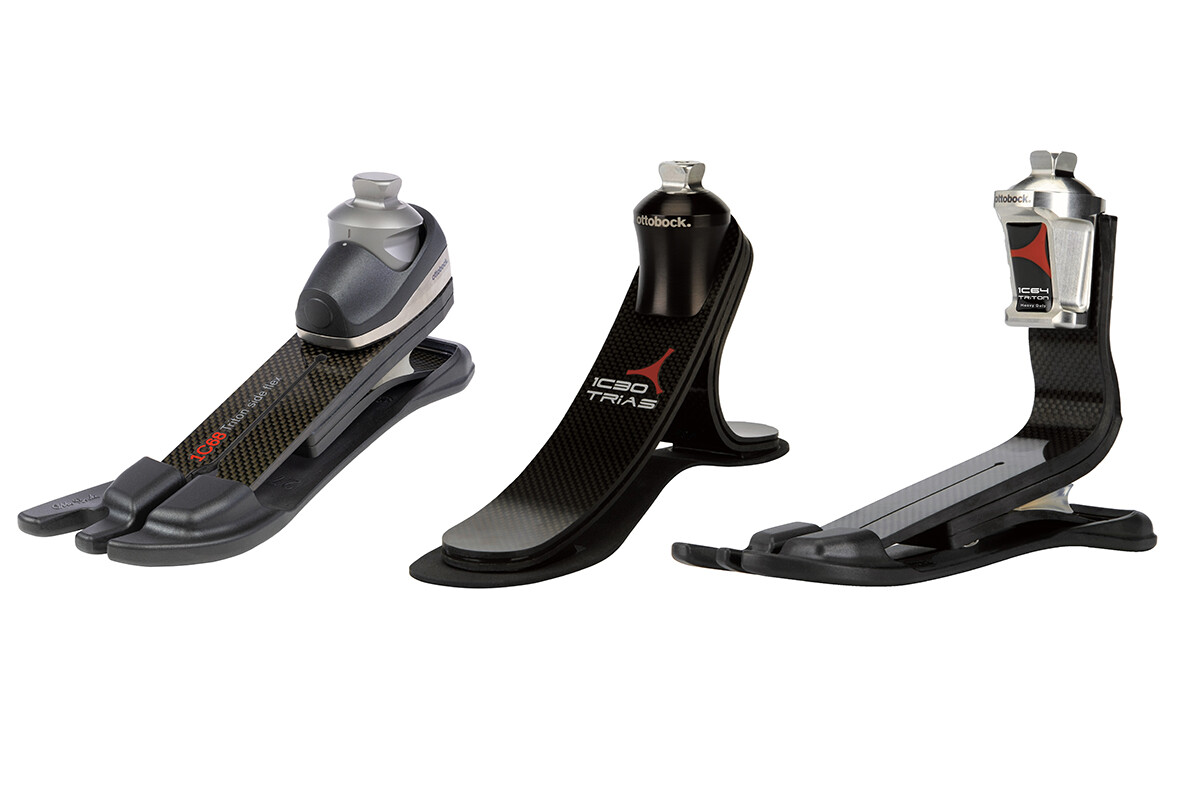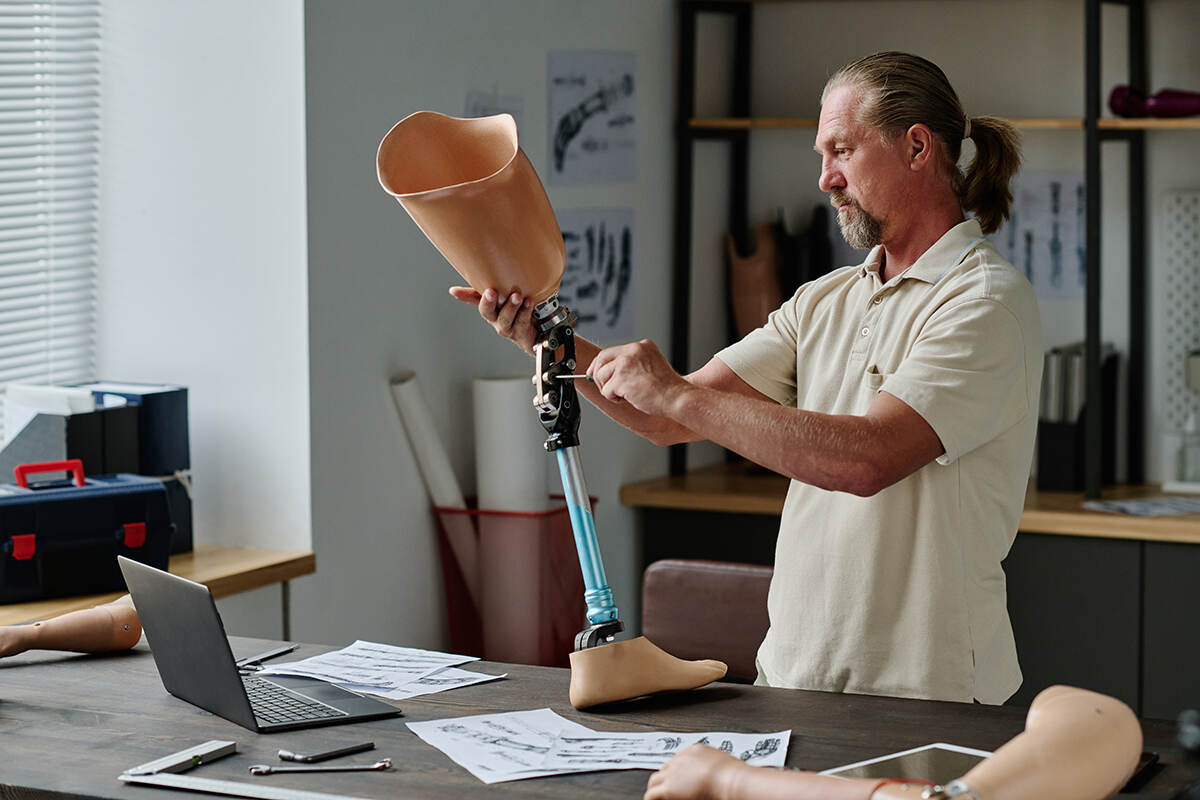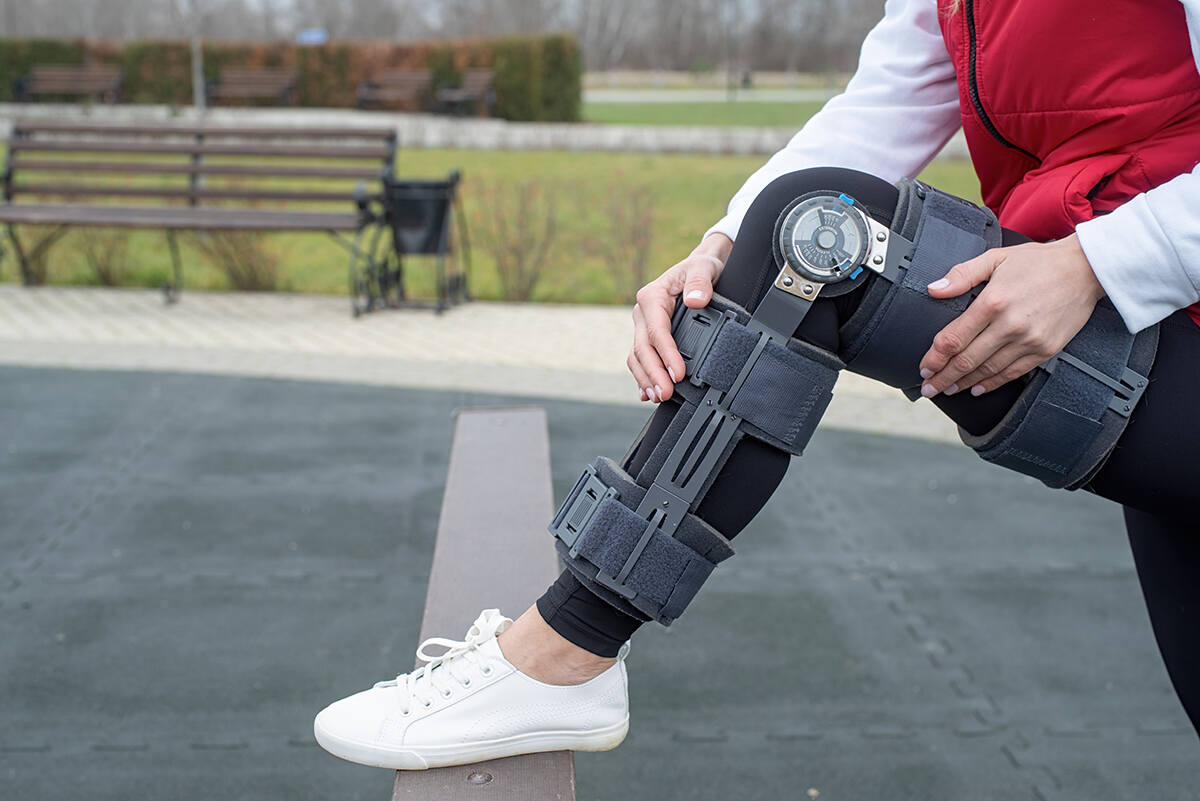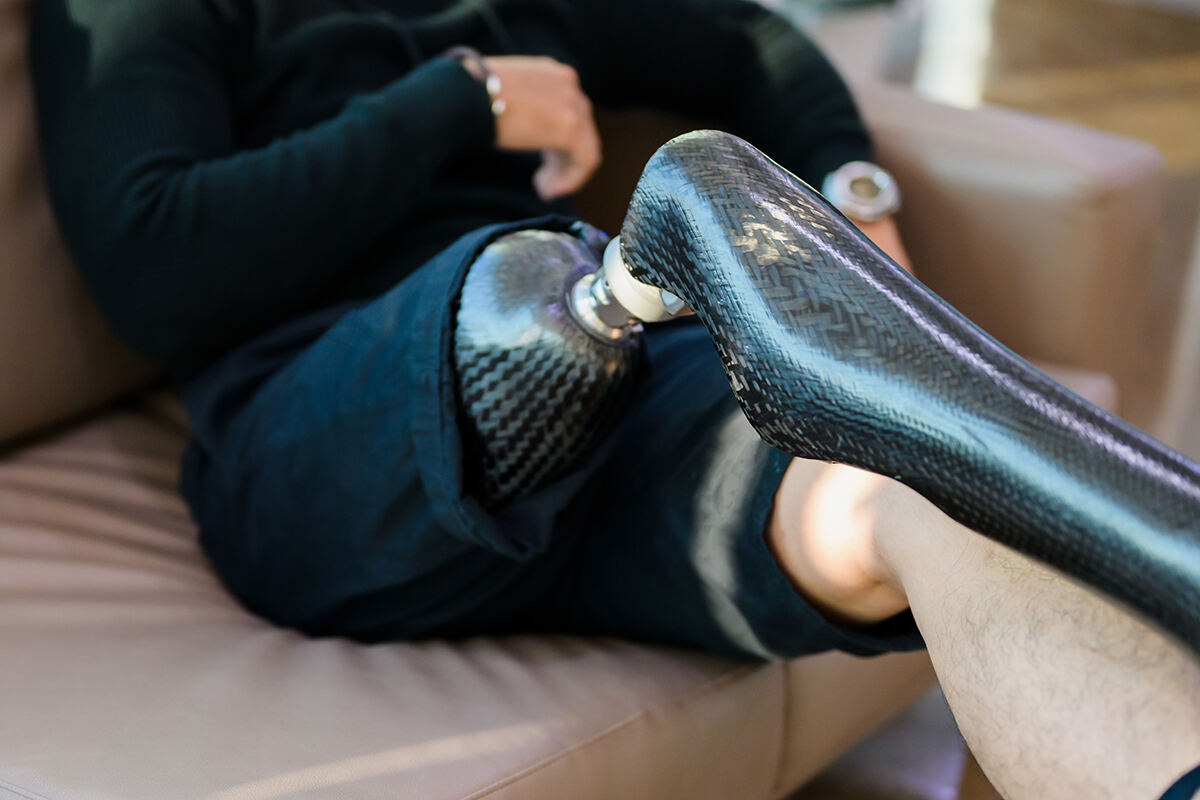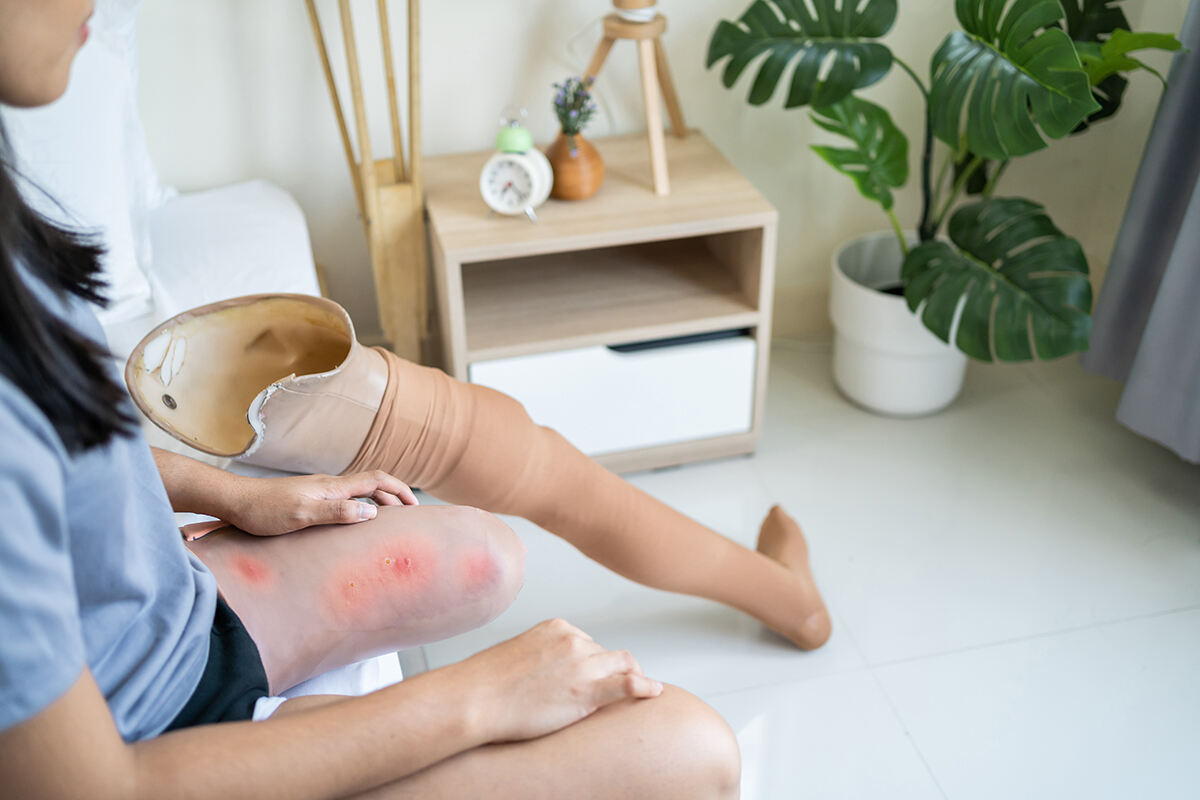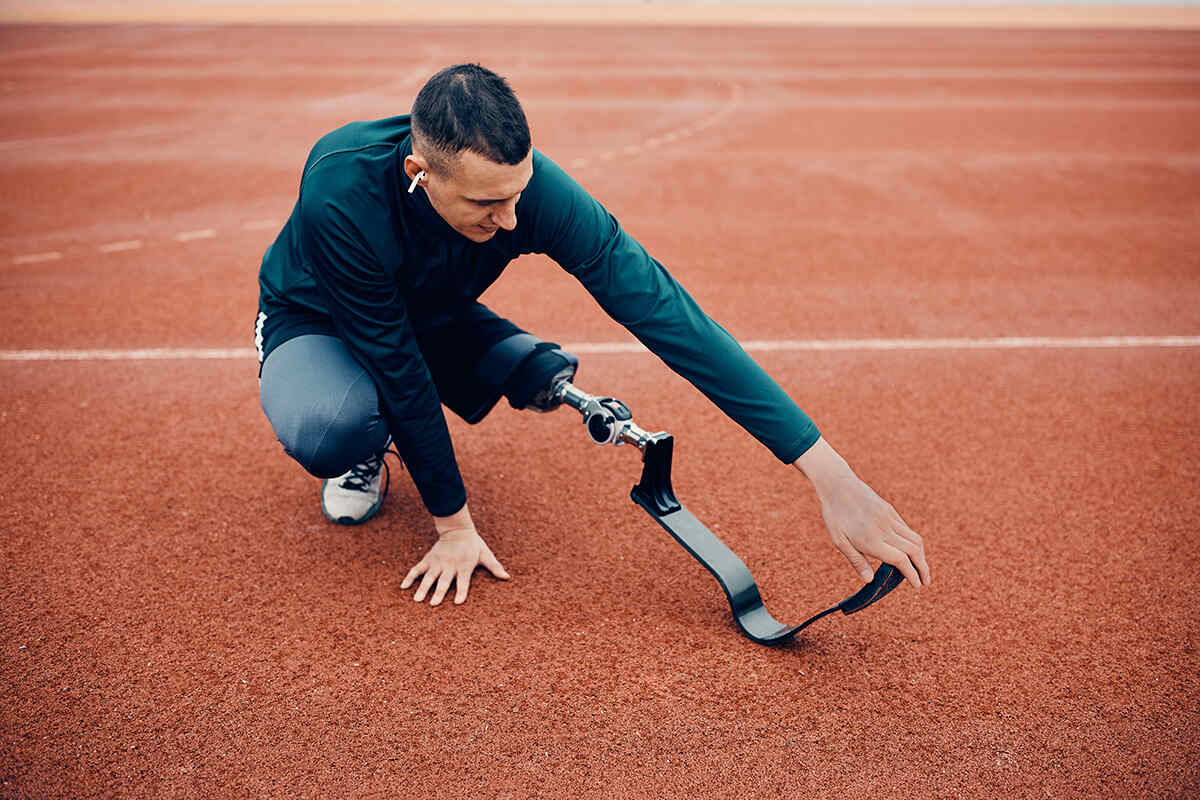Picture this: you’re standing at the starting line of a race, heart pounding, adrenaline surging. The whistle blows, and you’re off. But unlike the other competitors, you’re running this race with a prosthetic leg. This might seem like an insurmountable challenge, but it’s not. Every day, below-knee amputees worldwide face this challenge and succeed.
How, you ask? Through determination, resilience, and the power of modern prosthetic technology. This race isn’t just about speed; it’s about mastering the unique journey of walking with a prosthetic leg for below knee amputees. It’s a journey filled with challenges, but also victories, personal growth, and the joy of regaining mobility. Ready to take the first step? Let’s go.
Key Takeaways
- Mastering the art of walking with a below-knee prosthetic leg involves understanding fit, strength and balance.
- Proper maintenance is essential to ensure comfort and stability during rehabilitation.
- Exercises such as weight shifting, standing on different surfaces, strengthening remaining muscles can help build endurance for everyday living with a prosthetic leg.
Embracing Mobility: Walking with a Below-Knee Prosthetic Leg

Learning to walk with a prosthetic leg is comparable to mastering a new language. It requires practice, patience, and a dash of courage. But the rewards are immeasurable. The journey begins with understanding the significance of:
- Proper fit
- Strength
- Balance
- Adaptation
The freedom to move, the independence to traverse the world on your own terms, and the empowerment that comes with surmounting a personal challenge are waiting for you.
Acquiring the skill of ambulation with a prosthetic leg is a process as unique as you are. It begins with:
- Transferring your weight onto your prosthesis
- Mastering the art of manipulating your joints to replicate a typical gait
- Executing fundamental movements such as sitting and standing while progressively increasing the duration of prosthesis use
- Engaging in rehabilitation exercises to enhance your range of motion, bolster your confidence, and alleviate phantom limb pain.
The Importance of Proper Fit and Maintenance
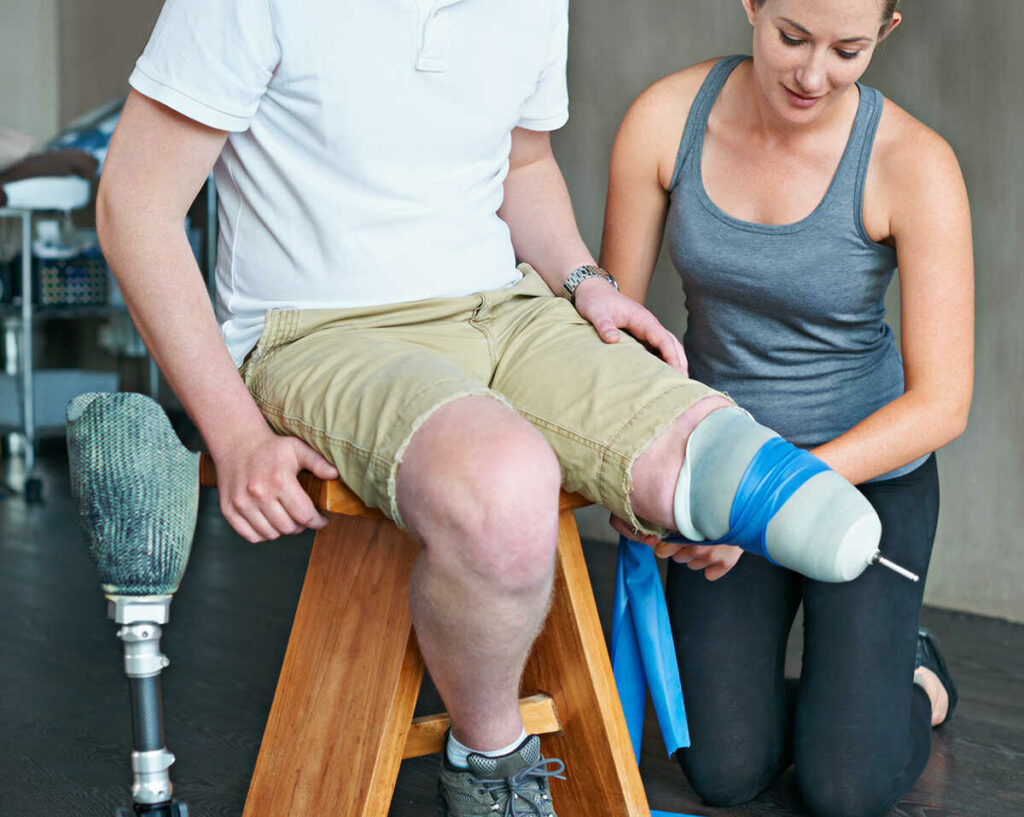
Just like a pair of perfectly tailored jeans, a prosthetic leg must fit impeccably to ensure comfort and effective operation. But achieving this perfect fit isn’t just about comfort; it’s also about providing essential support and stability during your initial steps of learning to walk with a prosthetic leg.
However, having a well-fitted prosthetic leg is just one aspect. It’s equally vital to regularly care for and maintain your prosthetic leg to prevent skin irritations and ensure its durability. This includes cleaning the socket area regularly and consulting with a clinician for routine maintenance.
As you progress in your rehabilitation, you’ll find that you can walk with little or no support from walking aids, a testament to your resilience and strength.
Building Strength and Balance
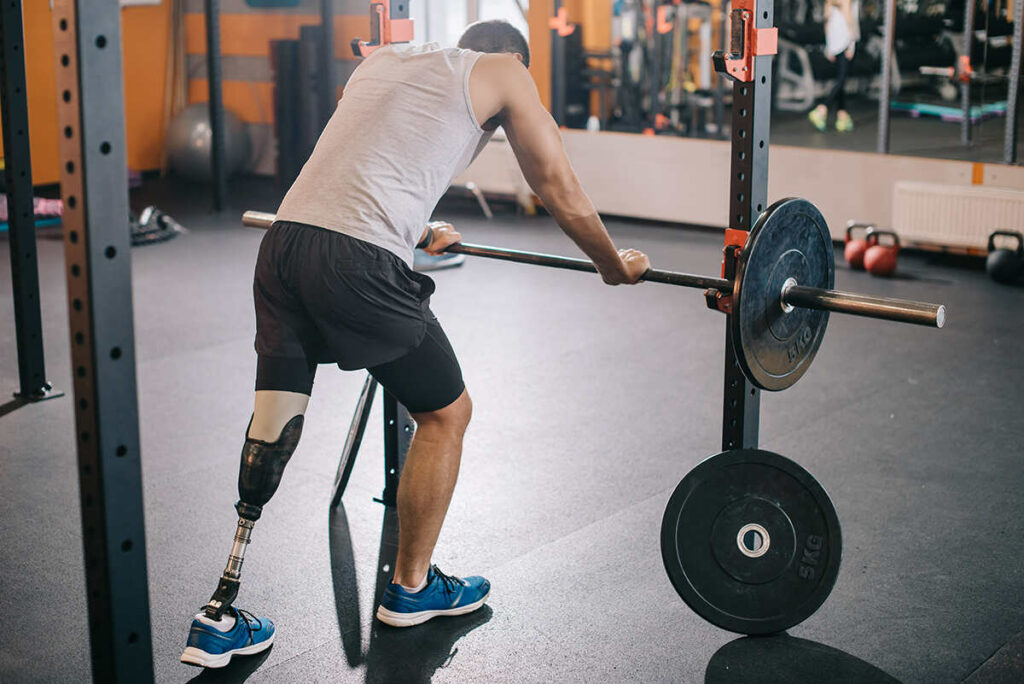
Gradually, you’ll notice an enhancement in your physical and mental strength and balance. And while the journey may seem daunting, remember that you’re not alone. With the right strength and balance exercises, you can build a strong foundation for your new life with a prosthetic leg.
A variety of exercises can substantially enhance your strength and balance, including:
- Simultaneous opposite arm and leg raises
- Mini squats
- Core-strengthening activities like crunches and planks
- Standing on one leg with open and closed eyes
- Leg swings
- Clock exercises
- One-legged squats
- Balance board exercises
These exercises can help improve your balance and stability.
Remember, the journey of a thousand miles begins with a single step, just like how a tall stick starts with a single twig.
Adapting to Your New Prosthetic Leg
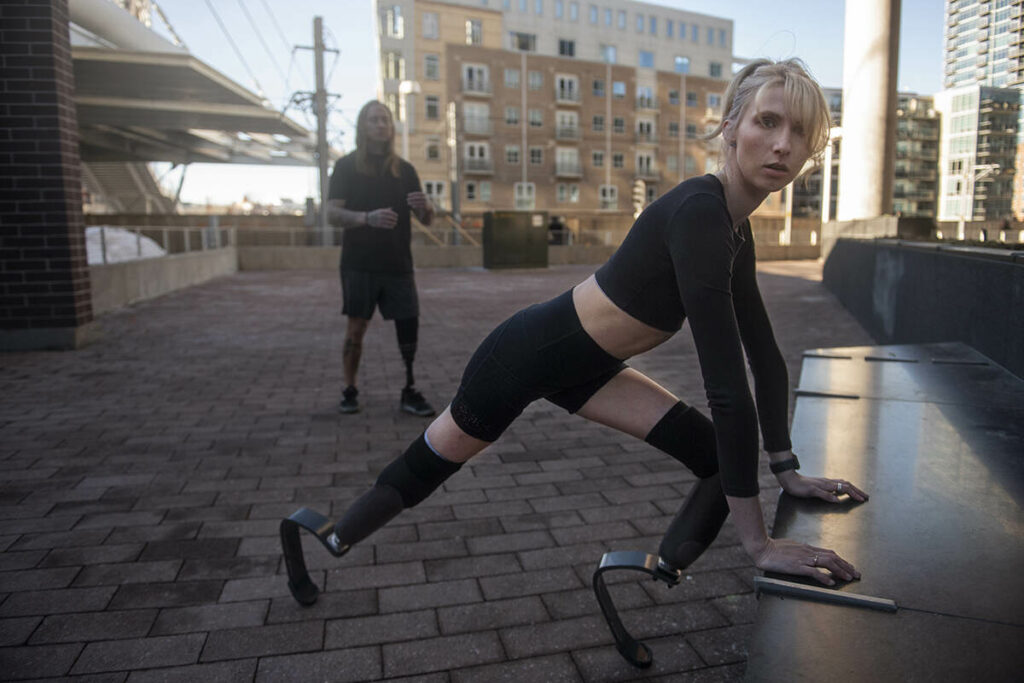
Imagine embarking on a voyage to an uncharted territory. That’s what it feels like to adapt to your new prosthetic leg. It’s a journey filled with challenges, but also with triumphs and lessons that will shape your life moving forward.
The process of learning to walk with a prosthetic leg may take as long as a year, particularly if the amputation is above the knee. But every step you take, every stumble you recover from, and every milestone you achieve brings you closer to a life of mobility and independence. Pain or discomfort should not be ignored. Make sure to consult your clinician for advice. It’s essential to listen to your body, pace yourself, and celebrate your progress every step of the way.
Practical Exercises for Below-Knee Amputees
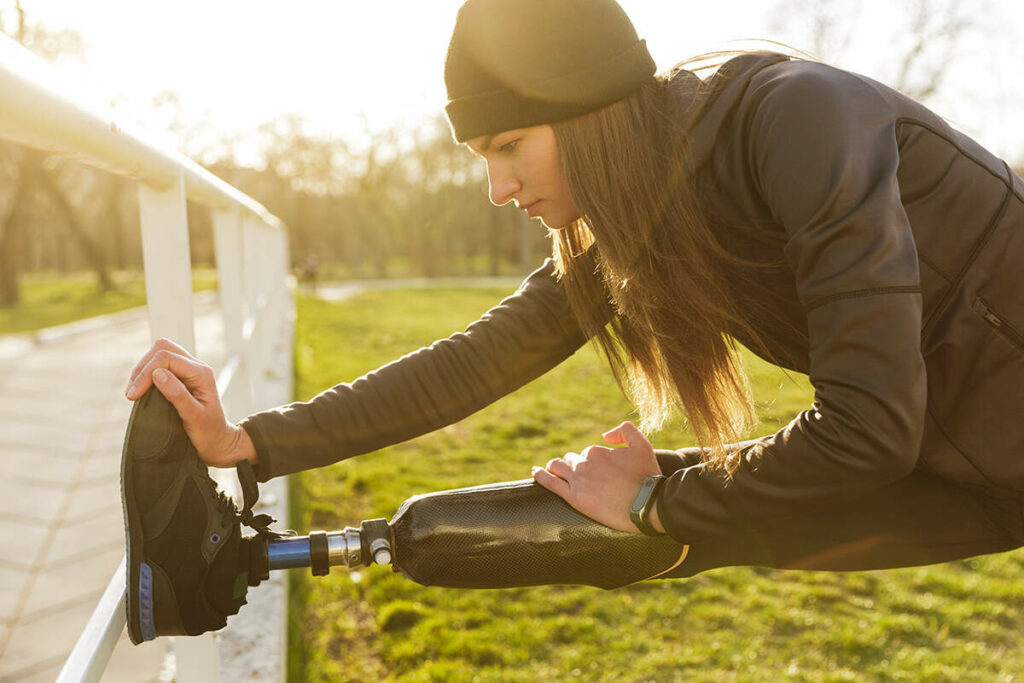
Exercises form the foundation of your journey towards mobility. They’re like the daily drills of a pianist, helping you fine-tune your movements, build muscle strength, and improve your balance. These practical exercises are designed specifically for below-knee amputees to enhance your mobility and boost your confidence. By incorporating more practical exercises into your routine, you can further improve your mobility and overall well-being.
From leaning over while placing weight on your prosthetic leg to alternating the leg used for kicking and performing hip lifts, these exercises pave the way for improved balance and coordination. But remember, every person is unique, and so is their journey. Always consult with a healthcare professional or physical therapist for personalized guidance and exercises suited to your individual needs.
Weight Shifting and Standing
Do you remember the first time you rode a bicycle? The key to staying upright was learning to shift your weight. It’s the same principle when learning to use a prosthetic leg. Mastering proper weight transfer through weight shifting exercises is vital, as they play a key role in maintaining balance and strengthening the involved muscles.
Standing exercises, on the other hand, help provide stability and support. Begin by standing upright and distributing your weight evenly between both legs. As you gain confidence, try transferring your weight from your sound side leg to the prosthetic side while standing. Remember, it’s not about how fast you go, but how far you’ve come.
Walking on Different Surfaces
Life is not a flat road; it’s a path filled with uneven terrains, slopes, and stairs. Gaining the ability to walk on varied surfaces is critical for enhancing your adaptability and boosting your confidence. After all, the world is your playground, and you should be able to explore it with confidence and ease.
Exercises such as:
- Prosthetic leg balance
- Leg swings
- Prosthetic leg clock with arms
- One-legged squats
- Single-leg step-ups
Walking can help you become more comfortable with various surfaces, allowing you to walk comfortably. Remember, the path may be bumpy, but with each step, you’re getting stronger and more confident.
Advanced Exercises
After acquiring basic skills, you can elevate your upper body training to the subsequent level. Advanced exercises such as:
- seated push-ups
- partial squats
- wall squats
- pelvic tilts
can help you further develop your skills and abilities for walking with a prosthetic leg. Just like a marathon runner training for a race, you need to gradually increase the intensity of your exercises to build your strength and stamina.
Whether you’re bouncing on a ball standing in place, balancing on one leg, or balancing a stick on your hand, these exercises are designed to challenge your balance and coordination. Remember, you’re stronger than you think.
Overcoming Common Challenges
The journey towards walking with a prosthetic leg comes with its own set of challenges. From phantom limb pain to changes in body mechanics, below-knee amputees face a unique set of challenges. But remember, every challenge is an opportunity for growth and learning.
One of the most common challenges is phantom limb pain, a phenomenon where you feel pain in the part of the limb that has been amputated. While the pain can vary in intensity and duration, there are various treatment options available, including medication, therapy, and coping techniques.
Managing Phantom Limb Pain
Living with phantom limb pain can be daunting, but it’s not a battle you have to fight alone. Various strategies can be employed to manage this pain, such as:
- Medication
- Non-medication treatments
- Physical therapy
- Occupational therapy
- Mirror therapy
From peripheral nerve changes to scar tissue from the amputation surgery, several factors could contribute to phantom limb pain. But with the right treatment and a positive mindset, you can manage this pain and continue to live a fulfilling life. Remember, you’re not defined by your challenges, but by how you overcome them.
Adjusting to Changes in Body Mechanics
Your body is a marvel of mechanics, and when a part of it changes, the rest must adapt. Post a below-knee amputation or an above knee amputation, your body mechanics undergo changes to accommodate the new requirements of walking with a prosthetic leg. From adjustments in gait and posture to changes in muscle recruitment strategies, these alterations are all a part of your journey to mobility, including the adaptation of the knee joint.
But with every challenge comes a solution. By strengthening your remaining muscles, utilizing a well-fitted prosthetic leg, and engaging in balance exercises, you can compensate for the changes in your body mechanics. Remember, change is not a roadblock, but a stepping stone to new possibilities.
Tips for Everyday Living with a Below-Knee Prosthetic Leg
Living with a below-knee prosthetic leg after a lower limb amputation involves not just relearning to walk with prosthetic legs, but also adapting to a new way of life. From selecting the right footwear to caring for your residual limb, there are several aspects to consider in your daily life.
Developing endurance constitutes another fundamental element of life with a prosthetic leg. Through regular exercises and gradually increasing wear time, you can improve your overall mobility and quality of life. Remember, this is not a sprint, but a marathon. And every step you take brings you closer to the finish line.
Proper Footwear
Just as a car needs the right tires to perform optimally, you need the right footwear for optimal comfort, support, and functionality with your prosthetic leg. Whether it’s flats, sneakers, or high-heeled footwear, the right shoe can make a significant difference in your comfort and mobility, as well as ensuring proper foot placement.
Different shoe features can provide various levels of support for individuals with a prosthetic leg. From accessibility and balance to adjustable prosthetic feet and a split-toe feature, the right shoe can enhance your mobility and make your journey a little bit easier. So, choose your shoes wisely; they’re not just a fashion statement, but a crucial part of your journey to mobility.
Caring for Your Residual Limb
A well-cared-for residual limb is a key to a comfortable and functional prosthetic fit. It’s vital to:
- Routinely cleanse with mild soap
- Rinse thoroughly
- Completely dry before wearing any prosthetic device
- Regularly inspect the skin’s condition
- Apply lotion if necessary
These steps can go a long way in maintaining the health of your residual limb.
Look out for signs of irritation, injury, or a poorly fitting prosthetic. If you observe any such signs, consult your clinician immediately. Remember, taking care of your residual limb is just as important as using your prosthetic leg. Because at the end of the day, it’s all about ensuring your comfort and well-being.
Building Endurance
Just as a fortress is built brick by brick, endurance is cultivated through regular strength training, balance exercises, and advanced exercises, laying a solid foundation for your new life with a prosthetic leg.
Start with brief periods of wear and gradually increase the duration over time. Remember, Rome wasn’t built in a day, and neither is your endurance. It’s a journey that requires patience, perseverance, and most importantly, self-belief. Because every step you take, every hurdle you overcome, makes you stronger and more resilient.
Summary
Embarking on the journey of walking with a below-knee prosthetic leg is a testament to your resilience and determination. From mastering the art of walking with a prosthetic leg, overcoming common challenges such as phantom limb pain, to building endurance, each step of this journey is a milestone in your road to mobility and independence.
So, whether you’re standing at the starting line of a race or climbing a staircase, remember that every step you take is a victory. And with every victory, you’re not just walking; you’re moving forward, stronger, and more resilient than ever.
Frequently Asked Questions
How long does it take to learn to walk with a below knee prosthesis?
With practice, most people can learn to use a prosthetic leg in about five months. Your own learning experience may vary, but don’t give up if you don’t progress as quickly as you’d like—you will improve with more practice.
Does walking on a prosthetic leg hurt?
Using a prosthesis for walking can cause some muscle soreness as your body adapts, but pain or serious discomfort should be discussed with your clinician.
Can you walk without a limp with a prosthetic leg?
Many people are able to walk without a limp when using a prosthetic leg, either with or without the help of mobility aids such as canes and crutches.
How many hours a day can you wear a prosthetic leg?
You should wear your prosthetic leg for up to a couple of hours a day when you first get it, gradually increasing the amount of time you wear it each day.
Can you walk properly with a prosthetic leg?
With a prosthetic leg, many people are able to move around more easily and some can walk without the need for extra support.


